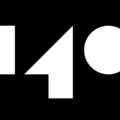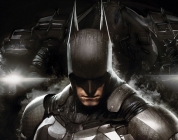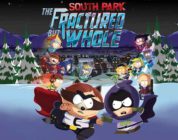Developer: Jeppe Carlsen
Publisher: Double Fine
Platform Reviewed: Xbox One
Release Date: August 30, 2016
Acquired via: Publisher-Supplied Code
In my teenage years, when video games stopped being a draw for me, I looked for other vectors to pass the time. Being a teenager, I wanted to find interests that would attract girls. I found such a vector through a friend: DJing. This was 1985. Being a DJ then involved lots of equipment and some innate musical talent. I have always had a yen for music, so I gravitated to it. After a short introduction to the mechanics, I was beat-mixing songs like a champ. My fledgling career of playing music for Sweet Sixteens and grabbing the attention of girls began in earnest!
It was during my DJ years that I became very familiar with beats per minute, or BPM. Music plays at a certain BPM. The slower it is, the mellower the song. The higher it is, the more intense the song. When the BPM gets to 140, the dance floor is usually vibrating with energy.
At certain points of 140 the video game, I felt that energy.
[youtube id=”j6o09vIbaeQ” autoplay=”no”]
Jeppe Carlsen, one of the minds behind Limbo, developed 140. The resulting game – a rhythm-based puzzle platformer set to 140 BPM – was interesting enough to garner Double Fine’s attention. I have played it for a few hours, and I find myself unable to stop playing it once the beat kicks in.
The game is difficult to explain verbally. It is a platformer in mechanics. You control a nondescript square that turns into a circle when moving and a triangle when jumping. There’s no reason for the metamorphosis; that’s just what it is. In the beginning, you move until you find an orb that drops down low enough for you to jump and grab by touching. The orb is a key that unlocks new areas when taken to a trigger, a special semicircle on the floor that the key attached to. Every time you unlock a trigger with a key, new areas open up. And the music begins to take shape.
As you progress through the triggers, the music begins to flesh out more. It’s very dubstep-ish, and it also becomes very energetic. The game has a similar vibe to Rez, the Dreamcast cult classic rail shooter. Everything in the world moves to this music, and you will soon find a rhythm for jumping between disappearing/reappearing blocks, transport blocks, and jump pads. Every puzzle has to be maneuvered within the 140 BPM.
The earlier levels are mesmerizing as you guide your shape around all the puzzles and obstacles. The bad thing is that once you figure out the solution, it becomes easy to perform again. There is no variation in the puzzles. Once you do them, there is no incentive to redo them unless you want to sail through them as quickly as possible.
The levels themselves are very well thought out, making the puzzle-solving pretty challenging in later levels. There is also no denying that they are very colorful. With each trigger unlock, the world changes hues to help accentuate the change in music.
The first level is not difficult to figure out at all. By later levels, though, the difficulty curve becomes very punishing. By the third level, you will feel the game is almost unfair with its demands. Moving and jumping while always paying heed to the metronome requires some very sharp hand-eye coordination, and it is difficult to nail the timing immediately. 140 BPM is pretty savage, and it will not work in your favor.
Also, once the game is beaten, there is no incentive to try again unless you really groove to it. With the puzzles solved, the only value to a gamer is to a speedrunner who wants to hop & bop until the end.
Still, I can’t deny that my time spent with 140 was pleasant. The more I played, the further I wanted to go. The music kept egging me on, building up with each solved puzzle until it was at a fever pitch. I loved the game for it. There are drawbacks, but they do not detract from the game. It is the game that the young DJ in me can groove to.






